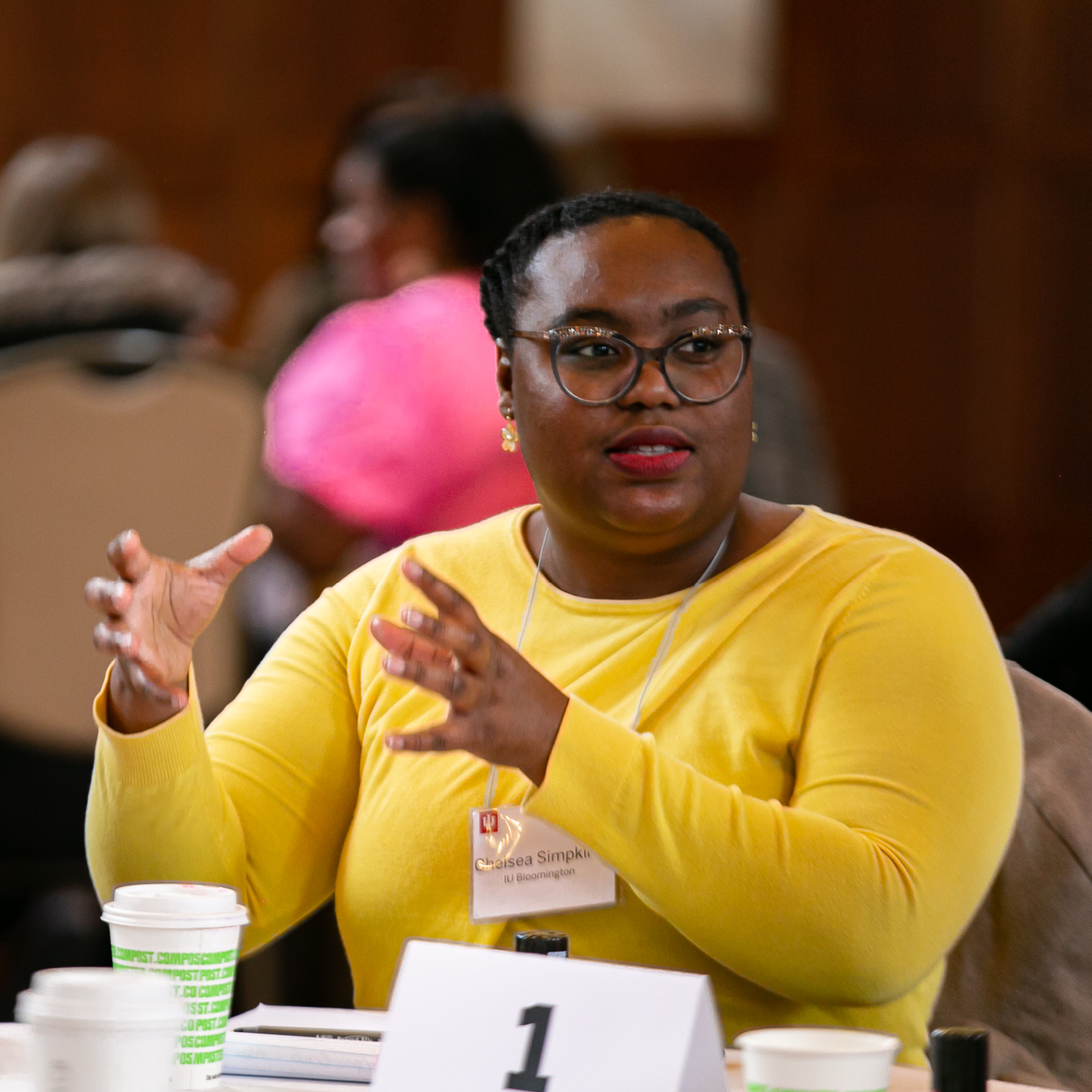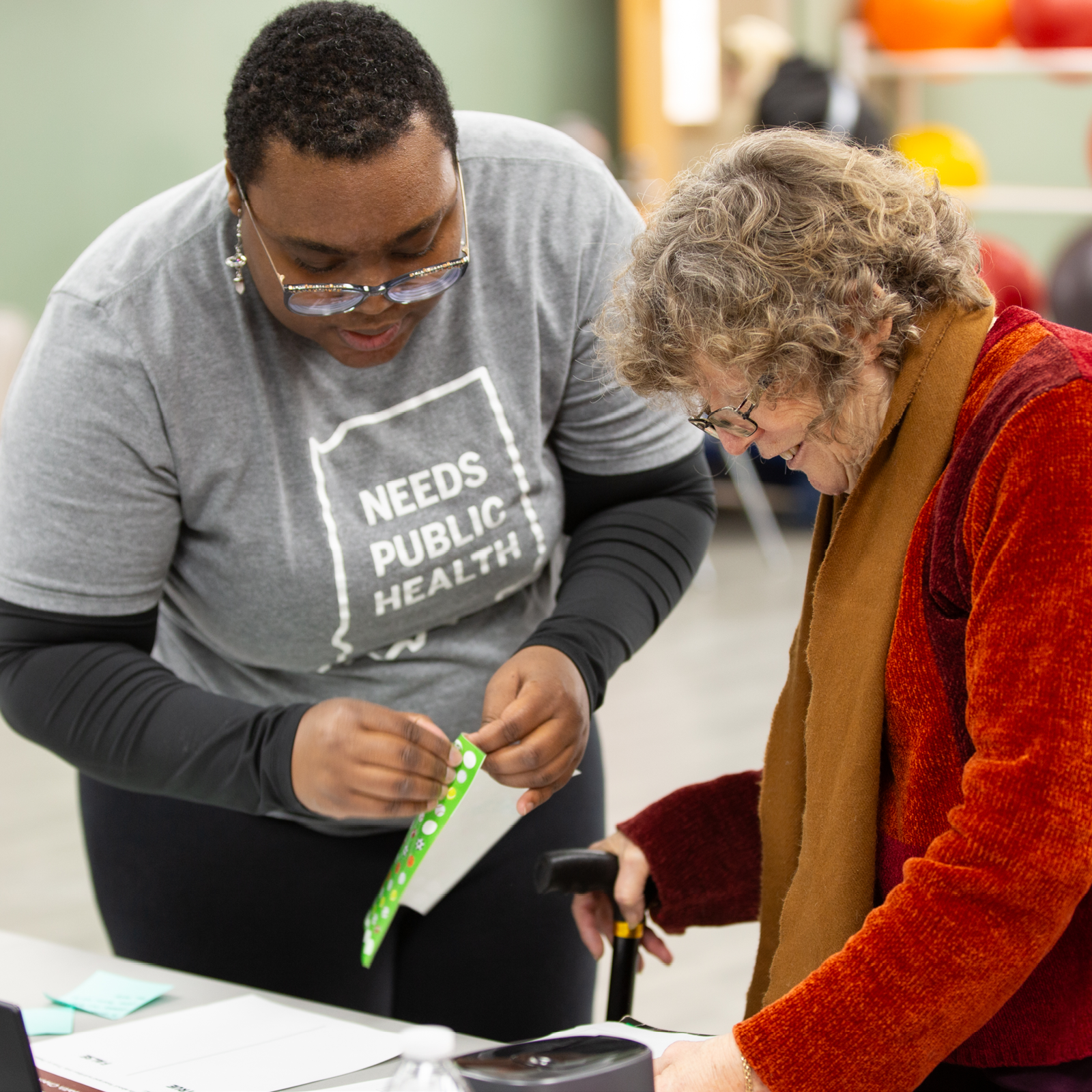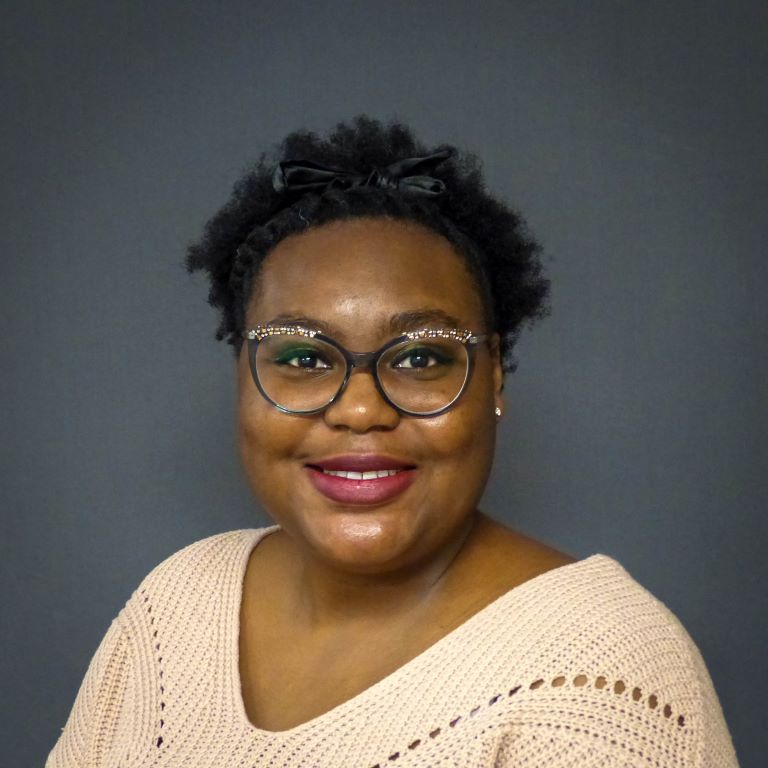“I believe that ‘community first’ is important,” said Chelsea Simpkins. And to this recent graduate of Indiana University’s Master of Public Health Program, these aren’t just words – they're a guiding principle for her career.
She draws on this community-first mindset to combine her passion for health access and community engagement to strengthen health communication efforts across rural Indiana.
Born and raised in Central Arkansas, Chelsea’s public health journey started long before coming to Bloomington. After undergrad in Arkansas, Chelsea worked as a research assistant at the Fay W. Boozman College of Public Health at the University of Arkansas for Medical Sciences, where she contributed to projects focused on rural communities throughout the state. She continued this commitment to rural health when she began her master’s degree at IU in 2021.
Shortly after enrolling at IU, Chelsea began working as a program manager for Dr. Priscilla Barnes, a faculty member in the IU School of Public Health-Bloomington- and an affiliate of the IU Center for Rural Engagement. Chelsea began to collaborate on a variety of health-centered community initiatives where her hands-on work as a program manager exposed her to the role that communications play in public health initiatives.
This experience inspired her to explore health communications in a new lens while interning for the center in the spring of 2025.






